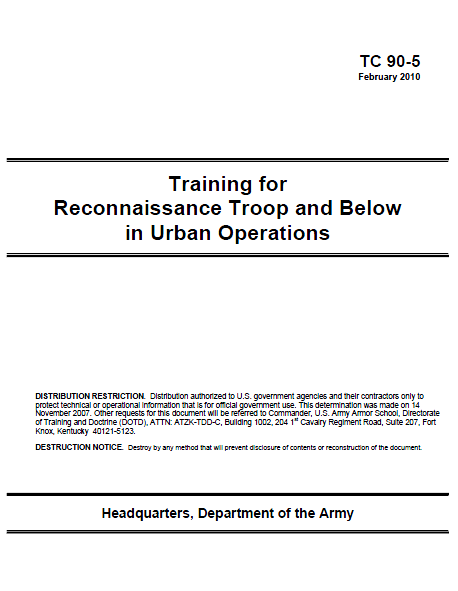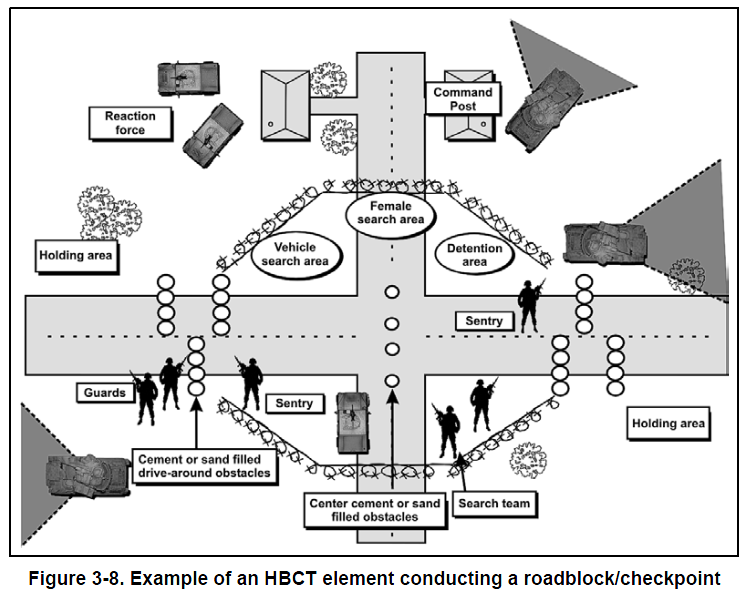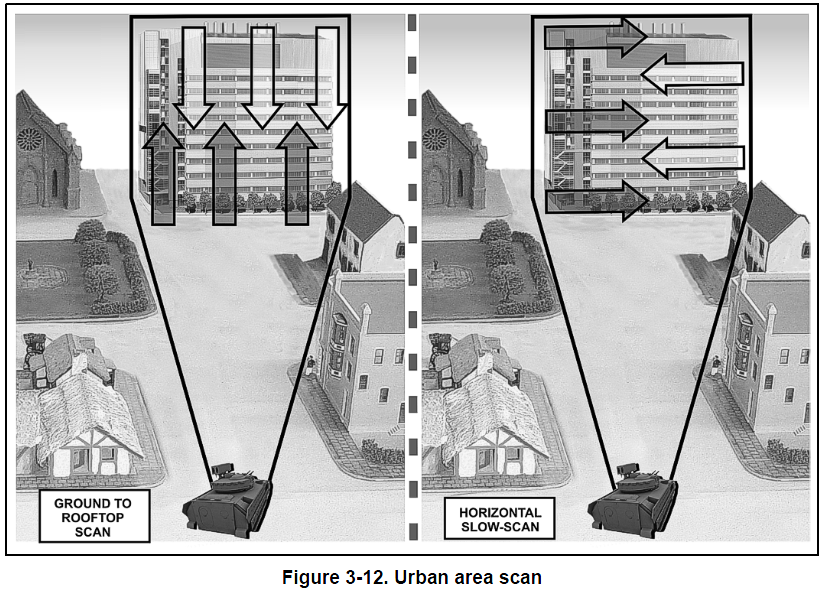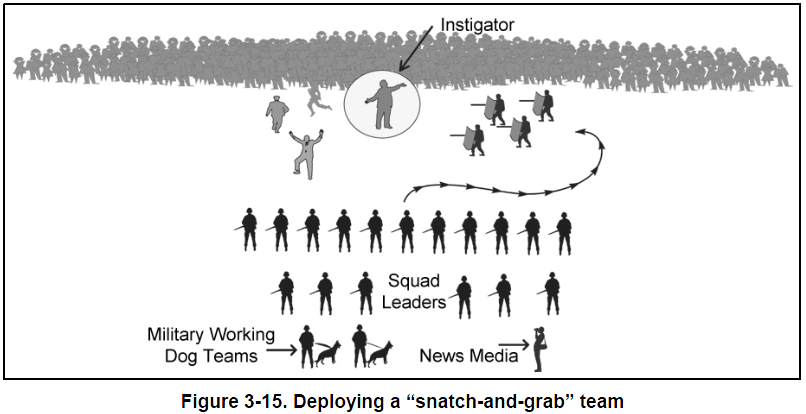TC 90-5 Training for Reconnaissance Troop and Below in Urban Operations
- 116 pages
- Distribution authorized to U.S. government agencies and their contractors only to protect technical or operational information that is for official government use.
- February 2010
- 5.09 MB
Because the operational environment (OE) requires Army forces to operate in urban areas, commanders must have accurate information on the complex human elements, infrastructure, and physical terrain that make up the urban environment. The limits on imagery and electronic reconnaissance and surveillance (R&S) capabilities place a premium on human-based visual reconnaissance. Reconnaissance troops and platoons must be trained to gather and analyze the necessary information and provide it to their commanders and higher headquarters. This chapter discusses definitions, training strategy, prerequisite training, individual task training, and collective task training designed to prepare reconnaissance units at troop level and below for operations in urban terrain.
…
URBAN-SPECIFIC TASKS FOR STABILITY OPERATIONS AND CIVIL SUPPORT OPERATIONS
1-25. The following sample tasks are listed in TC 7-98-1:
- Conduct cordon and search operations, including site exploitation (SE).
- Conduct roadblock/checkpoint operations.
- Conduct civil disturbance operations.
- Secure civilians during operations.
- Process detainees and enemy prisoners of war (EPW).
1-26. See FM 3-06.11 for a review of additional tasks related to stability operations and civil support operations. These include, but are not limited to, the following:
- Conduct area security, including presence patrols.
- Conduct convoy escort.
- Conduct route clearance operations.
…
SECTION IX – CONTROL CIVILIAN MOVEMENT/DISTURBANCE
3-60. The likelihood of civil disturbances during urban operations is high. Handled poorly, the reaction to a civil disturbance can quickly escalate out of control, with potential long-term negative effects for mission accomplishment. Conversely, a well-handled situation will lead to an enhanced view of the reconnaissance platoon’s discipline and professionalism and potentially could result in fewer such incidents in the future.
SUPPORTING TASKS
3-61. Table 3-9 lists the supporting tasks that must be accomplished as part of controlling civilian movement and disturbances.
OPERATIONAL CONSIDERATIONS
3-62. A possible TTP description for this task is covered by procedures known by the acronym of IDAM:
- Isolate.
- Dominate.
- Maintain common situational awareness (SA).
- Employ multidimensional/multiecheloned actions.
3-63. The first step entails isolating, in time and space, the trouble spot from outside influence or interaction. Unit tactical operation centers in the theater must develop TTP that “isolate” riots or demonstrations to keep them from becoming larger and potentially more violent. The idea is to close access into and out of the demonstration location (Figure 3-13). Once access is closed, rioters tend to tire within hours, and the demonstration dies down, eventually resulting in a peaceful conclusion. Figure 3-14 provides a technique for positioning several tiers of checkpoints and tactical control points, given the mission to isolate a riot. Controlling major road networks into and out of the demonstration area also serves to enhance trafficability if the riot escalates.
3-64. Units dominate the situation through force presence and control of information resources. They can demonstrate an overwhelming show of force at command posts (CP) and dispatch helicopters to conduct overflights above demonstrations and massing civilian mobs. In addition, use of appropriate air assets can give commanders a bird’s-eye view of events, providing real-time updates on the situation and ensuring that units know the “ground truth” at all times. This knowledge gives commanders a decisive advantage both in negotiations with potentially hostile elements and in tactical maneuvers.
3-65. The following factors apply for the platoon in attempting to dominate the situation:
- Although units can dominate a civil disturbance using nonlethal munitions, it is important to consider force protection issues. In addition, if aviation assets are available, reconnaissance or utility helicopters can provide a show of force. Attack helicopters should be used in anoverwatch or reserve position.
- Forces may need to detain group leaders or instigators to dominate a civil disturbance. An instigator is identified as a person who is “prodding” others to commit disruptive acts or who is orchestrating the group. Often, an instigator carries a bullhorn or hand-held radio.
- The smallest unit that can employ the “snatch-and-grab” technique is a platoon. Before a platoon deploys to quell a riot, identify a four-person snatch-and-grab team, two to secure the individual and two to provide security. It is imperative that each member of the snatch-and-grab team wears the Kevlar helmet with face shield and flak vest, but the team should not bring weapons or load-bearing equipment with them into the crowd. See Figure 3-15 for an illustration of the snatch-and-grab team.
- In accordance with Executive Order 11850, the President of the United States must approve the use of the riot control agency (RCA). The U.S. policy is to employ RCAs in limited circumstances, though never as a method of warfare. Commanders should be conscious that use of RCAs might pose a risk of escalation or public panic if it creates the erroneous perception that a chemical weapon is being used.
- Another element that is crucial for successful civil disturbance operations is the use of combat camera personnel. Document events to hold personnel, factions, and gangs or groups accountable. To ensure that the right message is being presented, control the information environment through the synchronized efforts of information engagement assets, with support from the staff judge advocate (SJA) and civil affairs (CA) offices.
3-66. Commanders and leaders maintain SA through timely, accurate, and complete multisource reporting. They can receive reports from a broad spectrum of sources. Unit CPs, air assets, and close liaison with HN police, NGOs, PVOs, and other civilian agencies all contribute to an accurate assessment of any situation. In addition, UAS, such as the Predator and Pioneer, are effective in observing large sectors of an AO. Analyze the reports produced and relay them to each unit involved in the operation.
3-67. As part of the IDAM procedures, multidimensional/multiechelon actions may entail the following considerations:
- Policy and legal considerations.
- ROE.
- Standards of conduct.
- High visibility of civil disturbance operations with the media, including leaders who must interact with the media.
- Crowd dynamics.
- Communication skills for leaders who must manage aggressive and violent behavior of individuals and crowds.
- Use of electronic warfare to monitor and control belligerent communications.
- Tactics.
- Lethal overwatch.
- Search and seizure techniques.
- Apprehension and detention.
- Neutralization of special threats.
- Recovery team tactics.
- Cordon operations to isolate potential areas of disturbance.
…
PSYCHOLOGICAL OPERATIONS
5-33. The smallest organizational PSYOP element is the tactical PSYOP team (TPT), consisting of three Soldiers. In high-intensity conflict, the TPT normally provides PSYOP support to a squadron. During counterinsurgency (COIN) and stability operations, planning and execution are primarily conducted at the troop level because the troop is the element that most often directly engages the local government, populace, and adversary groups. Operating in the troop AO allows TPTs to develop rapport with the target audience. This rapport is critical to the accomplishment of the troop’s mission. The TPT chief, usually a SSG or SGT, is the PSYOP planner for the troop commander. He also coordinates with the tactical PSYOP detachment (TPD) at the squadron level for additional support to meet the troop commander’s requirements. PSYOP planning considerations include the following:
- The most effective methods for increasing acceptance of friendly forces in occupied territory.
- The most effective methods of undermining the will of the threat to resist.
- The impact of PSYOP on the civilian population, friendly government, and law enforcement agencies in the area.
- Clearly identified, specific PSYOP target group(s).
- Undermining the credibility of threat leadership and whether or not it will bring about the desired behavioral change.





